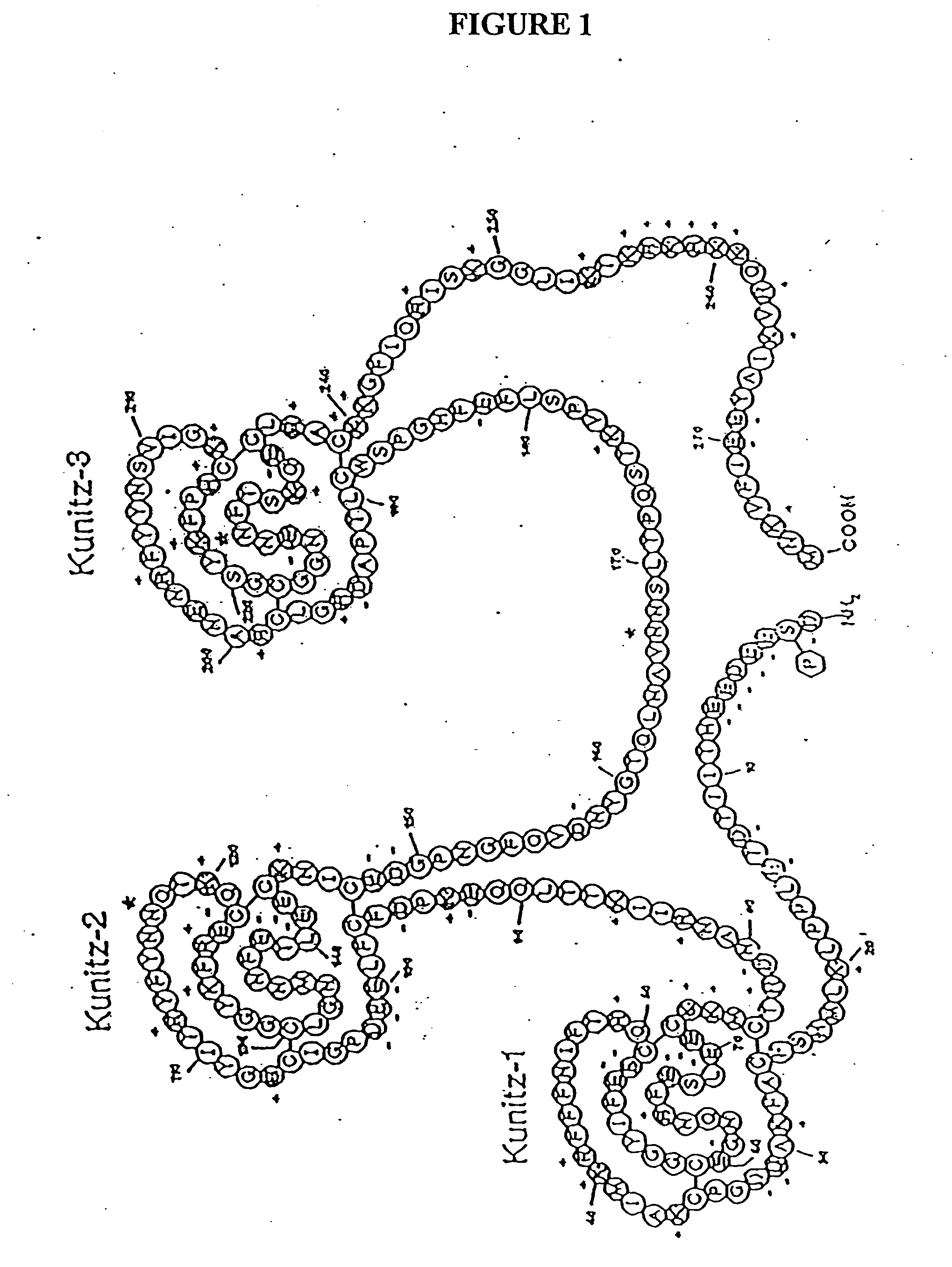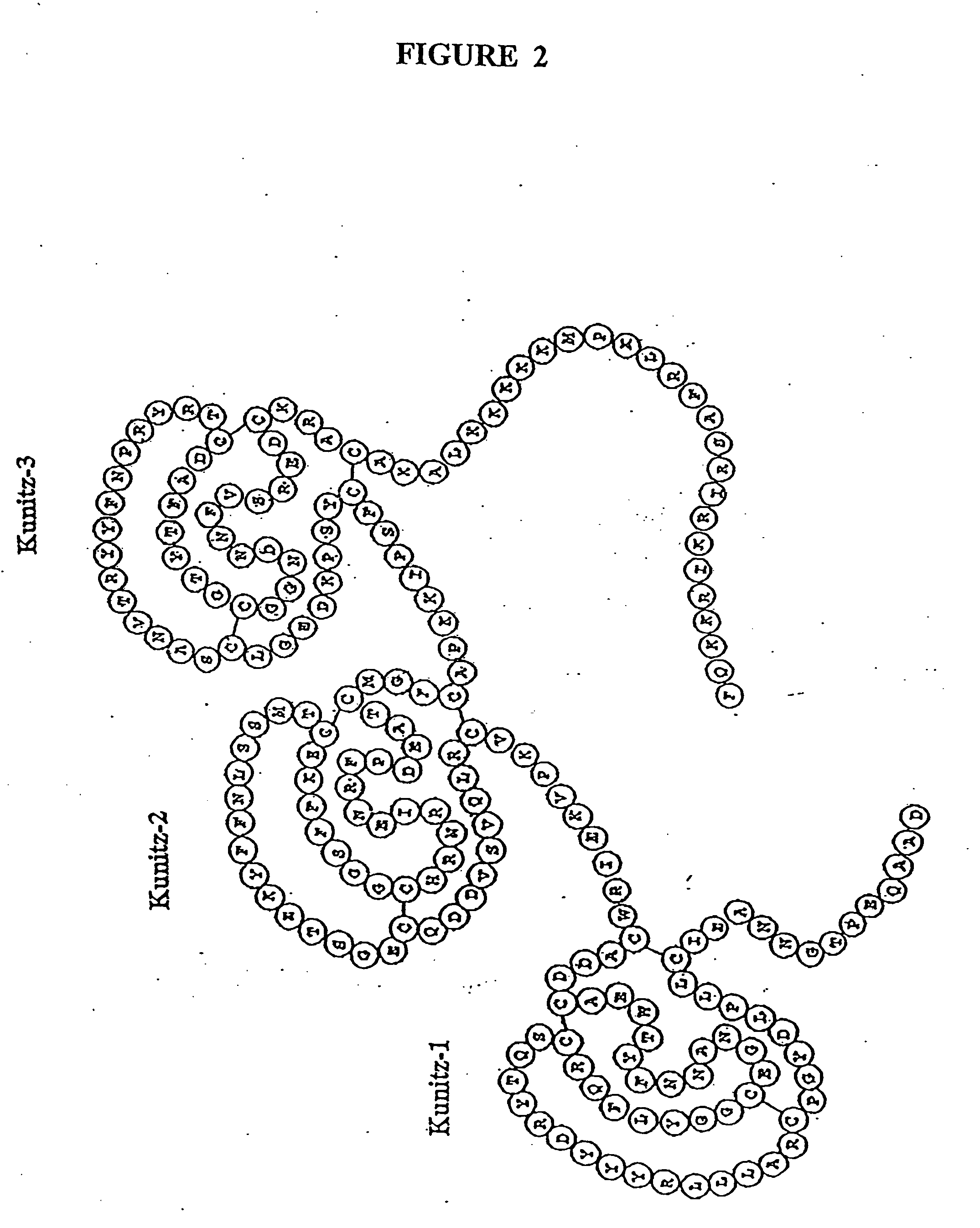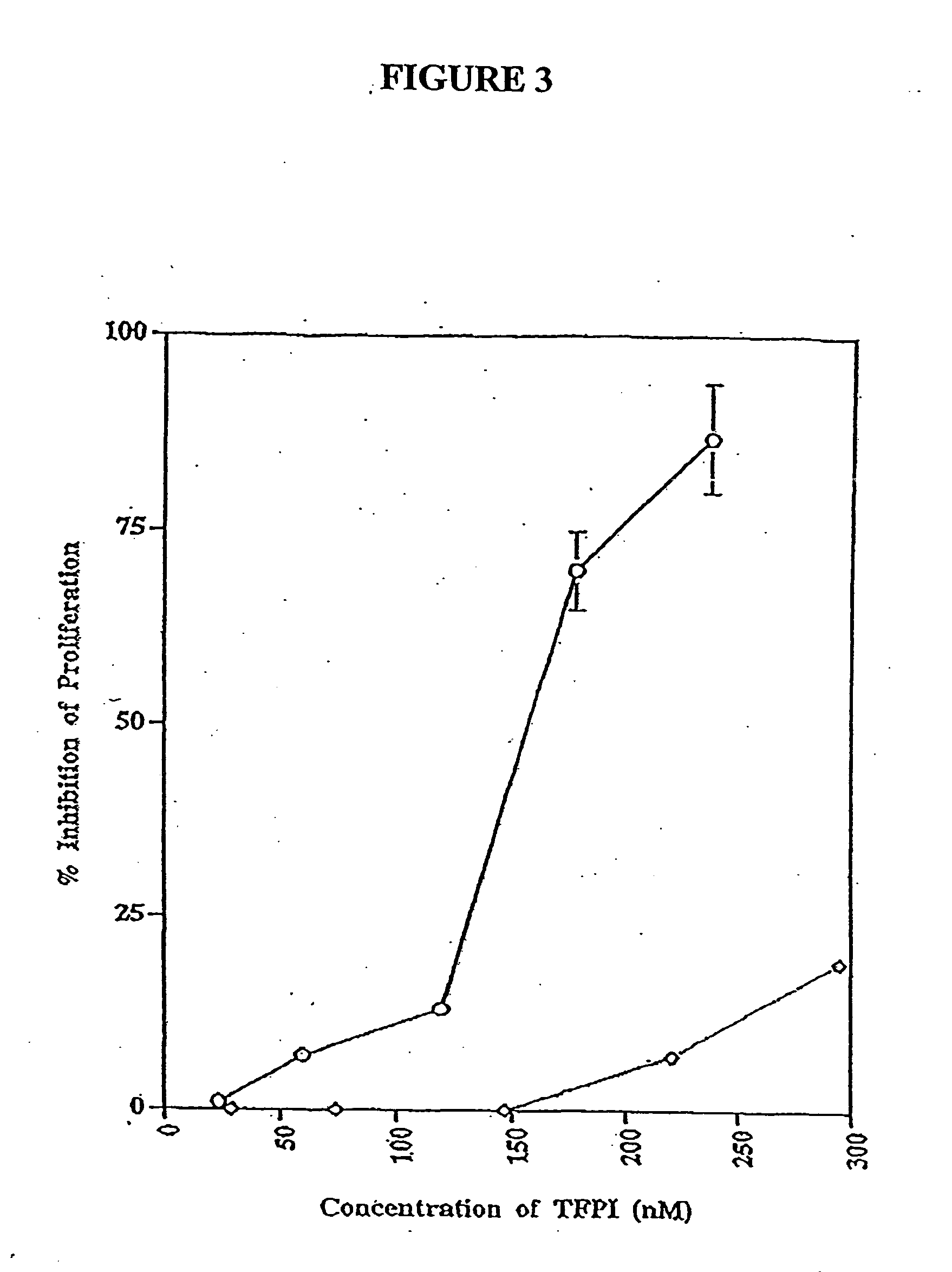Compositions and methods for inhibiting cellular proliferation comprising TFPI fragments
a technology of tfpi fragments and compositions, applied in the direction of peptide/protein ingredients, anti-cancer medical ingredients, angiogenin, etc., can solve the problems of abnormal response and relatively uncontrolled division, and achieve the effect of minimal side effects
- Summary
- Abstract
- Description
- Claims
- Application Information
AI Technical Summary
Benefits of technology
Problems solved by technology
Method used
Image
Examples
example 1
Effect of TFPI C-terminal Peptide on bFGF and VEGF Stimulated Endothelial Cell Proliferation
[0106] We sought to identify the domains of TFPI that were responsible for this activity. Our initial experiments were designed to assess the antiproliferative activity of a peptide consisting of the carboxyl terminal 23 amino acids of TFPI (SEQ ID NO: 3). This peptide is highly basic, and was previously identified as an important domain, which might mediate the cell surface interactions, as well as the antiproliferative activity of TFPI. The peptide was used to treat quiescent HUVECs that had been stimulated with either bFGF or VEGF.
Proliferation Assay of Endothelial Cells
[0107] HUVECs were routinely cultured to near confluency in EGM media (Clontech). The cells were trypsinized and plated in a 96-well plate at 5,000 cells per well per 100 μl EBM supplemented with 2% FCS and antibiotics. The cells were allowed to adhere to the plate for at least 12 hrs. Then, bFGF at 10 ng / ml, or VEGF at...
example 2
Interaction of TFPI C-terminal Peptide with VLDL Receptor
[0109] We had previously shown that TFPI was a ligand for the VLDL receptor, and that this interaction was necessary for the antiproliferative activity of TFPI. For this reason we sought to determine of the TFPI C-terminal peptide was a ligand for the VLDL receptor.
VLDL Receptor Binding Experiments
[0110] We measure the ability of the TFPI peptide to compete for the binding of 1 nM RAP (a well known high affinity ligand to the VLDL receptor in vivo and in vitro) to immobilized sVLDLrl-8 (the ligand binding region of the VLDL receptor). Briefly, microtiter wells were coated with either BSA or sVLDLrl-8. After blocking with 3% BSA, the wells were incubated for 1 hour at 37C with 1 nM RAP in absence or presence of increasing amounts of the TFPI peptide. Following the incubation, wells were washed, and incubated with a polyclonal antibody against RAP for 1 hour at room temperature. Next, the wells washed and incubated with an ...
example 3
Effect of TFPI C-terminal Peptide Interaction with VLDL Receptor on Antiproliferative Activity
[0112] We next assessed whether the antiproliferative activity of the TFPI peptide required the VLDL receptor. This was done by using a Rab4522, a specific polyclonal antibody for the VLDL receptor.
VLDL Receptor Binding Experiments
[0113] Experiments were set up identically to those outlined in Example 2 above, except these were performed using VLDL receptor specific antibodies to block the antiproliferative activity of the TFPI peptide. In these experiments, a fixed concentration (1 μM) of the rabbit polyclonal anti VLDLr IgG (R4522) was preincubated with HUVECs for 1-2 h at 37° C. After addition of VLDLr antibody, TFPI peptide and bFGF were added, and HUVEC proliferation was determined as above.
[0114] In the experiments shown in FIG. 8, bFGF proliferation experiments were performed on HUVECs in the presence of absence of 2 μM Rab4522. In this experiment preincubation with Rab4522 bloc...
PUM
| Property | Measurement | Unit |
|---|---|---|
| molecular weight | aaaaa | aaaaa |
| molecular mass | aaaaa | aaaaa |
| concentrations | aaaaa | aaaaa |
Abstract
Description
Claims
Application Information
 Login to View More
Login to View More - R&D
- Intellectual Property
- Life Sciences
- Materials
- Tech Scout
- Unparalleled Data Quality
- Higher Quality Content
- 60% Fewer Hallucinations
Browse by: Latest US Patents, China's latest patents, Technical Efficacy Thesaurus, Application Domain, Technology Topic, Popular Technical Reports.
© 2025 PatSnap. All rights reserved.Legal|Privacy policy|Modern Slavery Act Transparency Statement|Sitemap|About US| Contact US: help@patsnap.com



